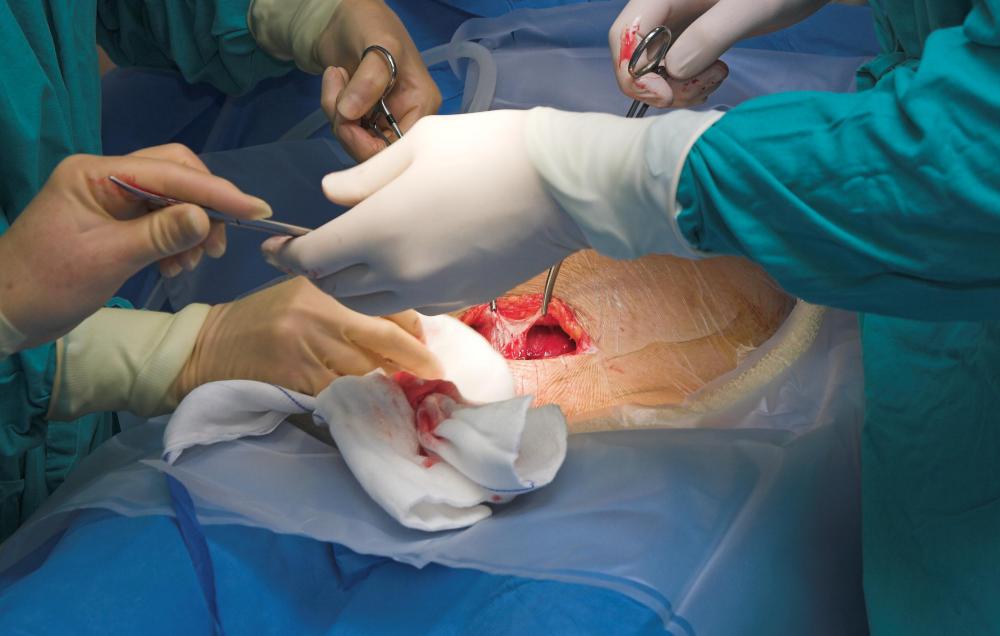At WiseGEEK, we're committed to delivering accurate, trustworthy information. Our expert-authored content is rigorously fact-checked and sourced from credible authorities. Discover how we uphold the highest standards in providing you with reliable knowledge.
Is Having a Repeat C-Section Safe?
It is usually considered safe for a woman to have a repeat c-section, though there are typically more risks after the same woman has about four of them. This is because this procedure is considered major surgery, and each one carries an increased risk of complications, such as infections within the body or damage to the bladder or bowels. Thus, most women can safely deliver all of their children by c-section, but those who want more than about four children may be putting themselves at risk. Fortunately, many women are candidates for vaginal birth after cesarean, commonly known as VBAC.
Most c-sections are performed out of necessity, such as lack of oxygen for the baby during vaginal delivery, or the fact that the mother's hips are too narrow for the newborn to fit through. A c-section is not typically elective surgery since it is a major procedure that can result in various complications. One of the most common risks is infection of the incision, though a hernia can also result. Some complications occur during surgery rather than during recovery, such as damage to the blood vessels, bladder, or bowels. A repeat c-section increases these risks, and also carries the possibility of the placenta attaching too deeply in the uterus during subsequent pregnancies, resulting in extreme bleeding and possibly requiring a hysterectomy.

A repeat c-section is not just dangerous to the mother at times, but also to the baby. For example, some babies are injured during the surgery due to the tools required to get them out of the uterus. Some babies also have breathing issues when their mother does not go into labor, which means that there is still fluid in their lungs that labor would normally clear. For these reasons, a planned c-section is often not optimal unless there is a medical reason that the baby cannot be delivered vaginally. Of course, emergency c-sections cannot usually be planned or avoided, and are often safer than allowing a dangerous vaginal delivery to continue.

The good news is that women are no longer required to have a repeat c-section just because they had this surgery for a previous birth. In fact, many women strive to have a vaginal birth after c-section, or VBAC, which allows them to avoid going through the major surgery that a repeat c-section entails. Unfortunately, women with a high vertical incision, which occurs when the doctor cuts the upper uterus from top to bottom, are not usually eligible for a VBAC since there is a chance of the old incision rupturing during labor. On the other hand, those with a low vertical or low transverse incision can often opt for a VBAC over a repeat c-section.
AS FEATURED ON:
AS FEATURED ON:














Discuss this Article
Post your comments